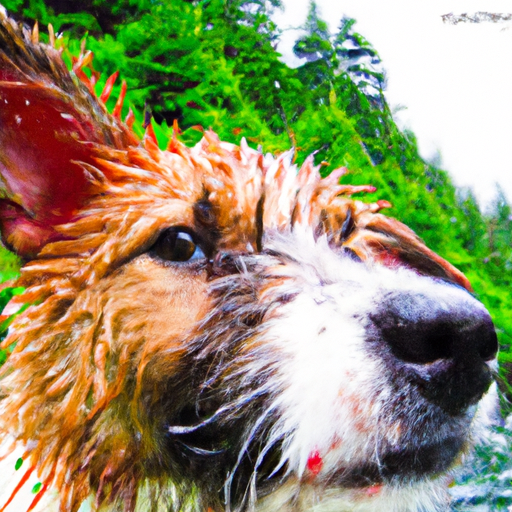So you've just brought home your adorable new puppy, but now the real work begins: crate training. If you're wondering how to successfully crate train your puppy, you're in the right place. Crate training is not only a practical way to keep your furry friend safe and secure, but it also helps with potty training, separation anxiety, and overall behavior. In this article, we'll explore some simple yet effective tips and tricks to guide you through the process of crate training your puppy, ensuring a smooth and positive experience for both of you.
Choosing the Right Crate
Size of Crate
When it comes to choosing a crate for your puppy, size matters. It's important to select a crate that is appropriate for your puppy's current size and will also accommodate their growth. You want to ensure that your furry friend has enough space to turn around, stand up, and lie down comfortably in their crate. However, you don't want a crate that is too large, as it may encourage your puppy to use one side as a bathroom area. So, take into consideration your puppy's current size and consult breed-specific guidelines to determine the appropriate crate size.
Type of Crate
There are several types of crates available in the market, including metal wire crates, plastic crates, and soft-sided crates. Each type has its own advantages, so it's important to consider your puppy's needs and your specific situation. Metal wire crates are a popular choice due to their durability and ventilation. Plastic crates, on the other hand, may offer a more den-like environment that can provide a sense of security for your puppy. Soft-sided crates are lightweight and portable, which can be convenient for travel. Consider the specific benefits and drawbacks of each type of crate before making your decision.
Location of Crate
Choosing the right location for your puppy's crate is crucial for successful crate training. You want to place the crate in an area of your home where your puppy can feel comfortable and secure. Avoid placing the crate in high-traffic areas or near loud noises that may startle your puppy. A quiet corner of a room or a designated area in a less-frequented part of your home can be ideal. Additionally, ensuring that the crate is easily accessible and visible to you will help in monitoring your puppy's behavior and progress during the training process.
Introducing the Crate
Creating a Positive Association
To make the crate a welcoming and positive space for your puppy, it's important to create a positive association with it. Start by placing soft bedding and familiar toys inside the crate. You can also leave treats in the crate to encourage your puppy to explore it on their own. To further reinforce a positive association, consider feeding your puppy their meals near the crate or even inside it. Gradually, your puppy will view the crate as a safe and comforting place to relax and unwind.
Gradual Introduction
Introduce the crate to your puppy gradually to prevent overwhelming them. Begin by leaving the crate door open and allowing your puppy to freely explore it at their own pace. Encourage curiosity by placing treats or toys near the crate entrance. As your puppy becomes more comfortable, start closing the crate door for short periods of time while you remain nearby. Gradually increase the duration of crate time, always making sure to reassure your puppy that they are safe and loved.
Encouraging Exploration
To help your puppy feel more comfortable with their crate, it's important to encourage them to explore it willingly. Avoid forcing your puppy into the crate as this may create negative associations. Instead, use positive reinforcement techniques to entice your puppy into the crate. You can toss treats inside or use their favorite toy to lure them in. With patience and consistency, your puppy will start to associate their crate with positive experiences and willingly enter it.
Establishing a Routine
Feeding Schedule
Establishing a regular feeding schedule is an essential part of crate training. By feeding your puppy at consistent times each day, you can create a routine that allows for easier potty training and a more predictable schedule. It's recommended to feed your puppy in their crate, as this further reinforces their positive association with it. Keep in mind that young puppies may need to eat more frequently, so adjust the feeding schedule accordingly.
Potty Breaks
Regular potty breaks are crucial during crate training to prevent accidents inside the crate. Puppies have small bladders and limited control over their bathroom habits, so it's important to take them outside for bathroom breaks frequently. As a general rule, puppies should be taken out to eliminate shortly after eating, drinking, playing, and waking up from naps. Establishing a consistent routine for potty breaks will help your puppy associate certain times with bathroom breaks and reduce the likelihood of accidents in the crate.
Exercise and Playtime
In addition to feeding and potty breaks, it's important to incorporate exercise and playtime into your puppy's daily routine. Regular physical activity helps to burn off excess energy and promotes overall well-being. Engage in interactive play sessions, go for walks, or provide mental stimulation through puzzle toys. By ensuring that your puppy gets enough exercise and playtime outside of their crate, you can help prevent boredom and restlessness while they are confined.
Using Positive Reinforcement
Rewarding Good Behavior
Positive reinforcement is a powerful tool when it comes to crate training. Whenever your puppy displays good behavior, such as entering the crate voluntarily or settling down calmly inside, be sure to reward them. This can be done through verbal praise, treats, or playtime outside of the crate. By consistently rewarding positive behaviors, you will motivate your puppy to continue behaving well and reinforce the idea that the crate is a positive and rewarding place to be.
Ignoring Whining
While it may be tempting to comfort your puppy when they whine or cry inside the crate, it's important to resist the urge. Giving attention to whining behavior reinforces this undesirable behavior and can make it more difficult to successfully crate train your puppy. Instead, wait until your puppy has settled down and is calm before offering attention or release from the crate. Consistency is key, and over time, your puppy will learn that whining does not lead to any rewards or special treatment.
Avoiding Punishment
Using punishment as a means of crate training should be avoided at all costs. Yelling, hitting, or scaring your puppy will only create a negative association with the crate, potentially leading to fear or anxiety. Remember, crate training should be a positive and gentle process. Focus on reinforcing positive behavior and provide your puppy with the love and patience they need to succeed.
Crate Training Techniques
Crate Games
Crate games are a fun and effective way to make crate training an enjoyable experience for your puppy. Start by tossing treats or their favorite toy into the crate and encourage them to retrieve it. As your puppy becomes more comfortable, gradually increase the difficulty by asking them to enter the crate and stay inside for longer periods of time before receiving the reward. The purpose of these games is to make the crate a positive and rewarding place, while also reinforcing basic obedience commands.
Desensitization to Departures
Many puppies struggle with separation anxiety when left alone in their crate. To help ease their anxiety and desensitize them to your departures, it's important to gradually increase the time you spend away from them. Start by leaving the room for just a few seconds, then return and reward your puppy for remaining calm. Gradually increase the duration of your absences, always ensuring that you come back before your puppy becomes distressed. This technique helps your puppy learn that your departures are temporary and that they can feel secure in their crate.
Gradual Increase of Alone Time
As your puppy becomes more comfortable with their crate, it's important to gradually increase the amount of time they spend alone in it. Start by confining your puppy for short periods, such as during meal times or when you need to complete a task. Slowly extend the time they spend in the crate, always making sure to provide mental stimulation and comfort through toys, treats, or a cozy blanket. By allowing your puppy to adapt to longer periods of confinement in a gradual manner, you can avoid overwhelming them and make crate training a positive experience.
Patience and Consistency
Sticking to a Schedule
Consistency is key to successful crate training. By sticking to a regular schedule for feeding, potty breaks, exercise, and crate time, you create predictability and routine for your puppy. Dogs are creatures of habit and thrive on consistency, so maintaining a structured schedule helps them understand what is expected of them. Additionally, a consistent schedule reduces the likelihood of accidents in the crate and helps your puppy adapt quicker to the training process.
Avoiding Accidents in the Crate
Accidents in the crate can be frustrating and setback the crate training progress. To prevent accidents, ensure that your puppy has ample opportunities to relieve themselves outside of the crate. Take them out for frequent potty breaks, especially after meals, playtime, and naps. Additionally, avoid leaving your puppy in the crate for longer periods than they can hold their bladder or bowels. If accidents do occur, clean the crate thoroughly to remove any lingering scent, as this may encourage your puppy to repeat the behavior.
Remaining Calm
Staying calm and patient throughout the crate training process is crucial. Puppies are sensitive to their owners' emotions, so if you become frustrated or anxious, your puppy may pick up on that energy and become stressed as well. Remember that crate training takes time and that setbacks are normal. Stay positive, reinforce good behavior, and provide your puppy with the support they need to succeed.
Overcoming Challenges
Separation Anxiety
Separation anxiety can be a common challenge during crate training. If your puppy becomes anxious or distressed when left alone in their crate, there are steps you can take to help them overcome this issue. Start by gradually increasing the duration of alone time in the crate, as discussed earlier. Additionally, consider offering a special toy or treat that is only available when your puppy is in the crate. This can help to redirect their focus and create a positive association with crate time. If separation anxiety persists, consult with a professional trainer or behaviorist for further guidance.
Fear of the Crate
If your puppy shows signs of fear or reluctance towards the crate, it's important to address this issue with patience and understanding. Start by reintroducing the crate in a positive manner, using treats and reward-based training. Allow your puppy to approach the crate on their own terms and associate it with positive experiences. Gradually increase their exposure to the crate, always ensuring that they feel safe and comfortable. If fear persists, consider seeking the guidance of a professional trainer who can provide specific techniques to help overcome this fear.
Regressions in Training
It's normal for puppies to experience regressions in their crate training progress. Factors such as changes in routine, illness, or environmental stressors can contribute to setbacks. If you notice that your puppy is suddenly having accidents in the crate or exhibiting signs of distress, evaluate any changes that may have occurred. Revisit the basics of crate training and reinforce positive behaviors. Consistency is key, and with time and patience, your puppy will regain their previous progress and continue to thrive in their crate.
Gradual Crate Training
Initial Introduction
When initially introducing the crate to your puppy, focus on creating a positive association. Place the crate in a comfortable and accessible location, with the door open. Introduce your puppy to the crate by allowing them to explore it at their own pace. Offer treats and praise for any interaction with the crate. Remember, this stage is all about making the crate a safe and inviting space for your puppy.
Short Periods of Confinement
Once your puppy is comfortable entering the crate voluntarily, begin closing the door for short periods of time while you remain nearby. Start with just a few seconds, gradually increasing the duration as long as your puppy remains calm and relaxed. Use treats, toys, or soothing music to help keep them occupied during these short confinement sessions. The goal is to help your puppy understand that being in the crate is not a cause for anxiety or distress.
Gradually Extending Crate Time
As your puppy adapts to short periods of confinement, you can gradually increase the amount of time they spend in the crate. Start by leaving them in the crate for a few minutes while you are in another room. Slowly extend the time to 10 minutes, 20 minutes, and so on, as long as your puppy remains calm and comfortable. Incrementally increasing the crate time allows your puppy to adjust at their own pace, reducing the risk of anxiety or fear associated with longer periods of confinement.
Nighttime Crate Training
Creating a Cozy Environment
Nighttime crate training is an important aspect of overall crate training. To help your puppy feel more comfortable in their crate during the night, create a cozy environment. Provide soft bedding, such as a blanket or dog bed, and ensure the crate is placed in a quiet and dimly lit area of your home. Consider using a crate cover or covering the crate partially with a blanket to create a den-like space that feels secure and comforting for your puppy.
Bedtime Routine
Establishing a consistent bedtime routine is key to successful nighttime crate training. This routine should include a potty break right before bedtime to minimize the likelihood of accidents during the night. Additionally, engaging in calming activities such as a short walk or gentle playtime before bed can help your puppy relax and prepare for sleep. Incorporate the crate into the bedtime routine by encouraging your puppy to enter it voluntarily and rewarding them for doing so. By creating a predictable and soothing routine, your puppy will associate the crate with a peaceful night's sleep.
Getting Through the Night
In the early stages of nighttime crate training, it's important to expect some interruptions during the night. Young puppies have limited bladder control and may need to go outside to eliminate. Set an alarm to wake up and take your puppy outside for a bathroom break, then return them to the crate once they have done their business. As your puppy grows older, their bladder control will improve, and they will be able to sleep through the night without needing to be let out. Be patient and consistent, and your puppy will eventually learn to sleep peacefully in their crate throughout the night.
Monitoring Progress and Adjusting Strategies
Tracking Behavioral Changes
Monitoring your puppy's progress during crate training is essential to ensure that you are on the right track. Keep a record of your puppy's behavior, including their response to the crate, any accidents or whining, and how long they can comfortably stay in the crate. By tracking these changes, you can identify any trends or issues that may need attention and adjust your training strategies accordingly.
Modifying Training Techniques
As you progress through crate training, you may need to modify your techniques to better suit your puppy's individual needs. If certain methods or rewards are not yielding the desired results, don't be afraid to experiment and try new approaches. Every puppy is unique, and what works for one may not work for another. Stay flexible and open-minded, and be prepared to adapt your training techniques as needed.
Seeking Professional Help
If you find that you are struggling with crate training despite your best efforts, don't hesitate to seek professional help. A certified dog trainer or animal behaviorist can provide valuable insights and personalized guidance tailored to your puppy's specific needs. They can help troubleshoot any challenges you may be facing and offer expert advice to ensure that your crate training journey is successful.
In conclusion, crate training your puppy can be a rewarding and beneficial process for both you and your furry friend. By carefully choosing the right crate, introducing it gradually and positively, establishing a routine, and using positive reinforcement techniques, you can help your puppy develop a positive association with their crate. Remember to be patient, consistent, and loving throughout the training process. With time and dedication, your puppy will learn to view their crate as a safe and comforting space, providing them with security and a sense of belonging.






